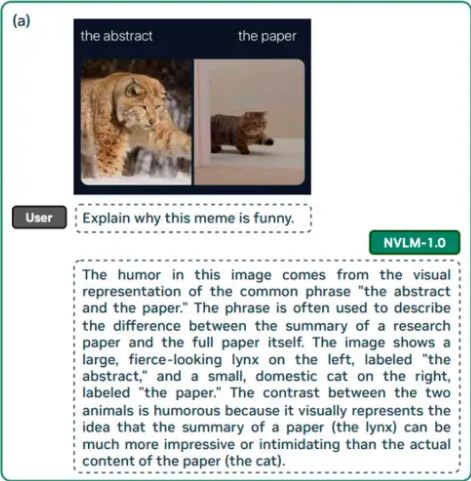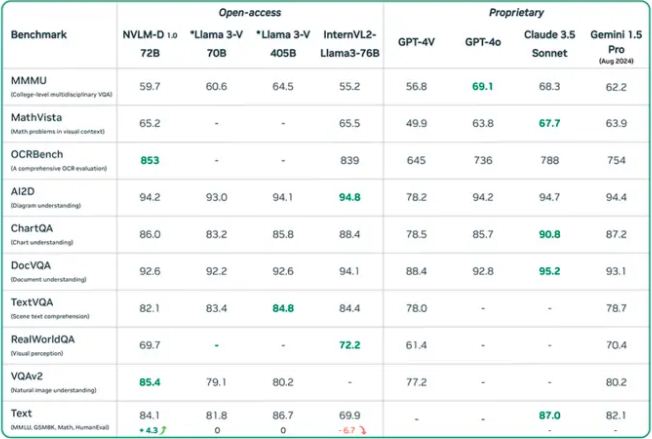Nvidia has just made a bold statement that surely caught the attention of Meta, Google, and OpenAI. The company has fully entered the AI space with a new language model called NVLM. It has just been introduced, and early tests already show it as a strong competitor in the world of artificial intelligence.
Please follow us on Facebook and Twitter.
NVLM 1.0 is the collection of language models that Nvidia has launched, with NVLM-D-72B being the standout. This AI can handle 72 billion parameters and has shown impressive performance that rivals GPT-4o, Llama 3-V-70B, and Gemini 1.5 Pro.
In early benchmarks, NVLM-D has shown that it performs exceptionally well in vision, text, and math problem-solving. Remarkably, even as an early version, it matches the results of GPT-4o and Claude 3.5, two well-established language models in the industry.
NVLM-D is Nvidia’s standout model, and it is already beginning to shine.
At its launch, Nvidia highlighted the impressive performance of NVLM-D-72B and its strong adaptability to visual inputs and complex text. The company emphasized its ability to perceive images, solve vision-based problems, and even understand memes effectively.

It is fascinating to see the results of the first comparative tests against the top models in the industry. NVLM-D not only comes close to GPT-4o and Claude 3.5 but, in some specific scenarios, it even surpasses them.
A prime example is its performance on text tasks. While other models focus on vision and complex problem-solving, NVLM-D prioritizes advanced language comprehension. This focus has allowed it to outperform established models and become a benchmark right from its launch.

The icing on the cake
However, NVLM poses a challenge to the rest of the industry not just because of its power and performance. Nvidia has introduced its new AI language models under an open-source policy, which is quite different from what most major companies in the industry are doing.
While OpenAI and Meta keep their models proprietary, Nvidia has chosen to allow open access to its development. This means there are no barriers for other companies to understand exactly how its artificial intelligence works.
This approach could not only accelerate AI research and discovery but also provide smaller companies access to complex models they couldn’t previously work with. By sharing its code, Nvidia enables the development of tools based on its model, which have traditionally been reserved for industry giants.
In summary, Nvidia has developed an AI language model that can compete with the biggest names. It has an incredible capacity for analyzing text and images, and it offers public code that anyone can access to learn how it works and create additional tools. Without a doubt, this is a significant win for Nvidia.





